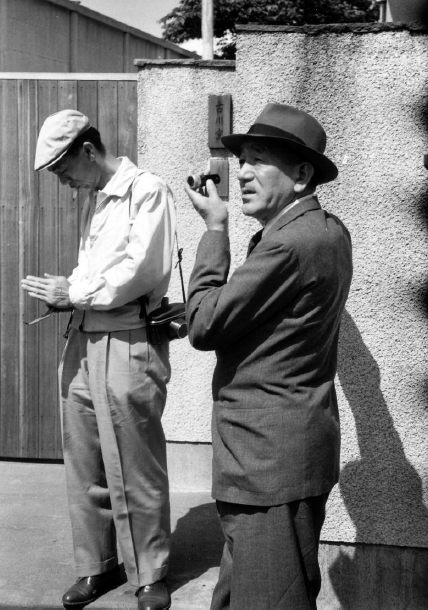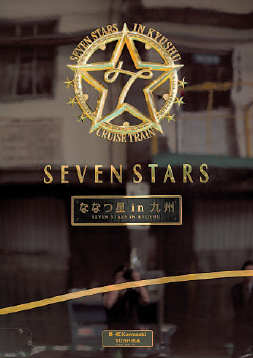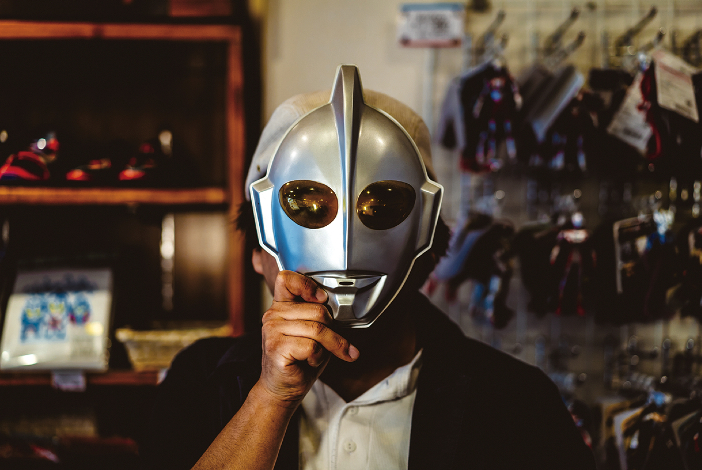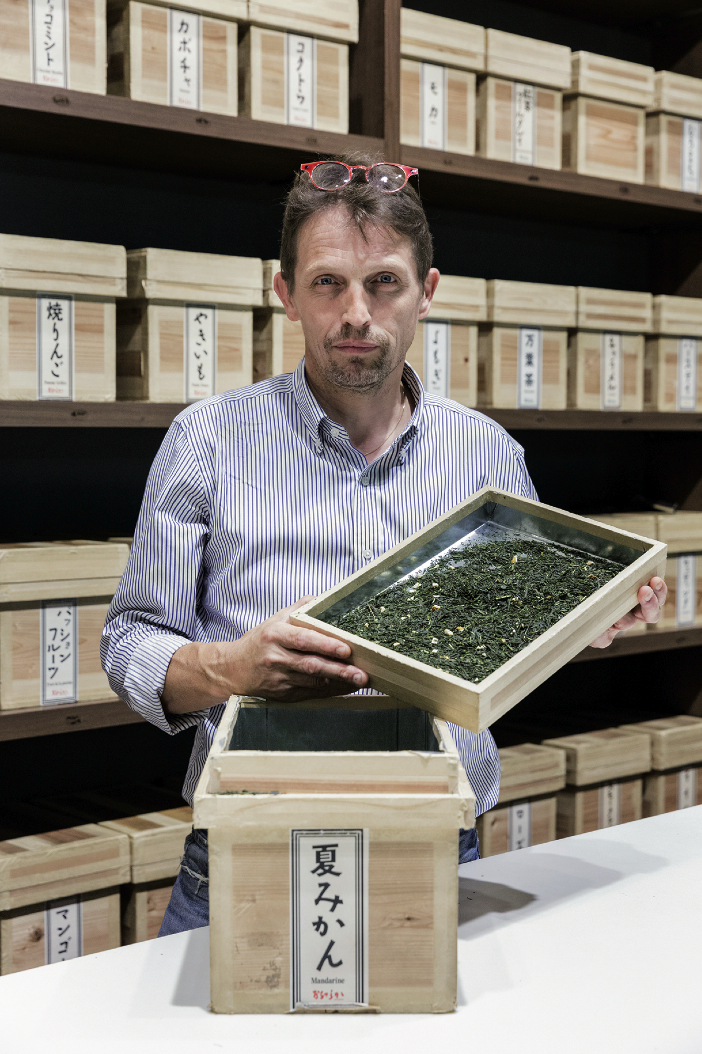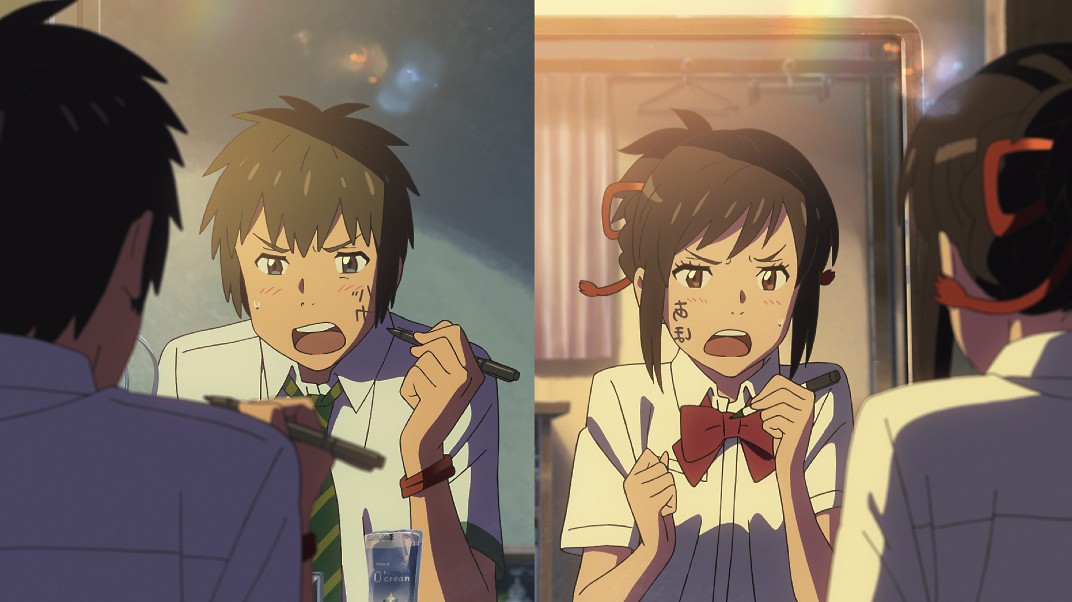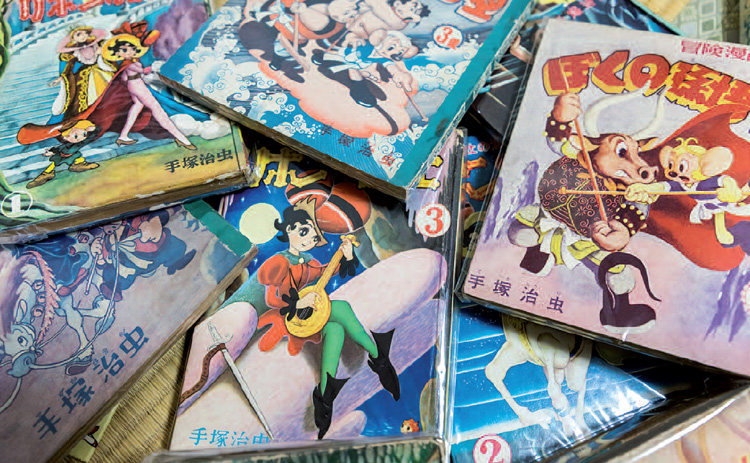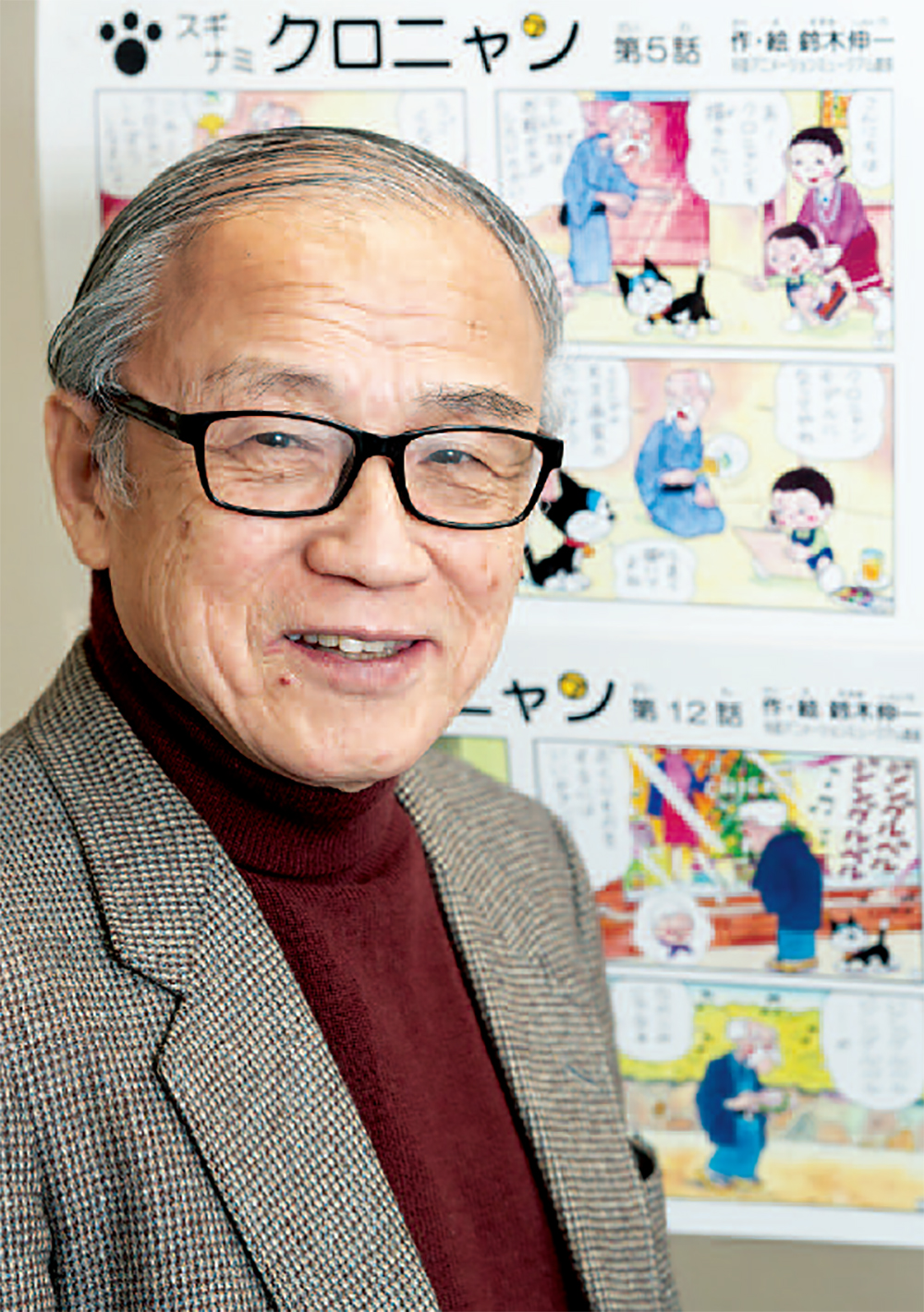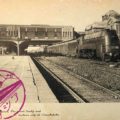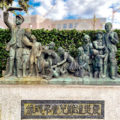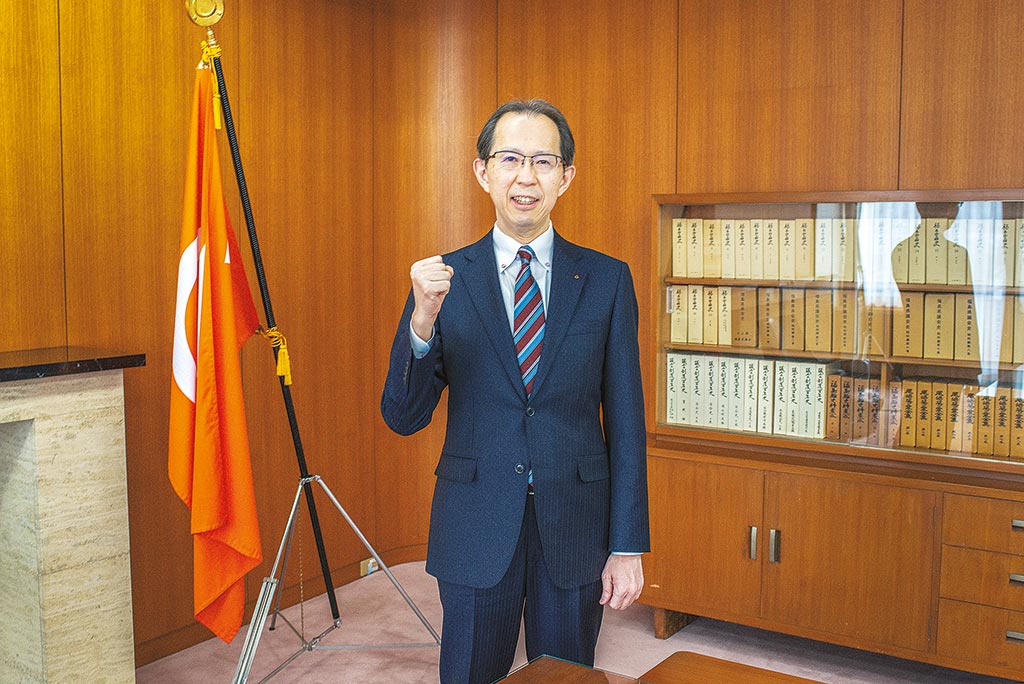

Determined to get the prefecture back on track, Governor Uchibori Masao is not short of ambition. Zoom Japan had a chance to talk to Governor Uchibori about how Fukushima is preparing for the next 10 years.
Governor Uchibori Masao has been the face of Fukushima’s reconstruction for the last nine years. The Naganoborn politician was first assigned to work in the prefecture in 2001 when he became the Director of the Living Environment Department and the Department of Planning and Coordination. In December 2006, he became vice governor. It was while he was in this post that Fukushima experienced a triple disaster in 2011.
In 2014, incumbent governor Sato Yuhei made it known that he would not run for re-election. Uchibori announced his candidacy and won the election after gaining the support of all the major political parties, becoming Fukushima’s 20th governor. He has since been re-elected twice, the last time in October 2022.
Last October you were re-elected as governor of Fukushima Prefecture. What is your takeaway from this result? What do you think are the reasons why voters have come to trust you? Uchibori Masao: Last year’s election campaign was very intense. You see, Fukushima is a huge prefecture; it is bigger than the combined area of Tokyo, Kanagawa, Chiba and Saitama. Fukushima is actually the third largest of Japan’s 47 prefectures and has 59 municipalities, and I visited each of them during the 17 days of the election campaign. I was able to meet many residents, talk to them and listen to their problems, and each time they only had words of encouragement for me.
These meetings are very important to me because they allow me to gauge people’s feelings. Right now, we are faced with two important issues. The first is Fukushima’s reconstruction. In 2011, there was the Great East Japan Earthquake and the nuclear accident. Since then, natural disasters such as earthquakes and typhoons have continued to rock the prefecture. That is the situation we are facing. Our second mission is regional revitalisation as a response to rapid population decline. For people in Fukushima, this is a problem we urgently need to solve. It is a worrying trend, and we need to halt it. I feel that the voters re-elected me because they believe that I can accomplish both of these things.
12 years have passed since the accident at Tokyo Electric Power Company’s Fukushima Daiichi Nuclear Power Station. What are the most pressing issues facing the prefectural government?
U. M.: As I said earlier, Fukushima Prefecture has been hit by multiple disasters. Everybody knows about the Great East Japan Earthquake of March 2011, which was actually an earthquake plus a big tsunami plus a nuclear power plant accident. As you know, those events were followed by all kinds of rumours. But that is not all. In 2019, for example, there was the East Japan Typhoon, which also caused widespread destruction. Then, two years ago and again last year, two earthquakes in a row exceeded a magnitude of 7.0 off the coast of Fukushima. In addition to that, there is Covid-19, and prices are now rising… We have been facing difficult challenges one after another. However, it all started on 11th March 2011 with the nuclear power plant accident. It was a very serious incident, unprecedented in Japan or the world, and it raised many serious related issues, but there are three I would like to talk about. The first is refugees. When a nuclear accident occurs, the government creates an evacuation zone, and many people have to leave their hometowns. More than 160,000 people were evacuated in 2011, and even after 12 years, more than 27,000 people are still living elsewhere. As I mentioned earlier, there are 59 municipalities in Fukushima Prefecture; 12 of those municipalities were subject to evacuation orders. In some cases, it was only parts of a certain municipality that were no-go areas, while in others, entire towns and villages became off-limits.
What can we do for the reconstruction and regeneration of the evacuation areas? The first difficult task is rebuilding the lives of the evacuees and revitalising those areas. Recently, evacuation orders have begun to be lifted in stages, and people are now able to return to their hometowns. However, this does not mean that their problems are over. It is not easy to return to their homes and resume their old life just as it was before because it is also not possible to immediately restore agriculture, forestry, fisheries and other industries to their former state. It is exceptionally complicated.
The second issue, which is also serious, is how to deal with the accident at TEPCO’s Fukushima Daiichi Nuclear Power Plant where a hydrogen explosion occurred on 11th March. Again, the task of decommissioning the power plant while taking all the necessary safety measures is extremely difficult. There are both immediate issues and long-term issues that we have to take into consideration. First of all, the most urgent issue we are facing is what to do with radioactive waste water. This water has been treated in order to eliminate most of the radioactive substances, but the nuclear plant is now full of tanks. Each one of them is 14 meters in diameter and 14 meters in height and contains 1,000 tonnes of water. Their number is increasing day by day [as of March 2021, Fukushima Daiichi had accumulated 1.25 million tonnes of waste water, stored in 1,061 tanks], and our immediate problem is what to do with the water. Another difficult issue is the spent fuel that caused a meltdown in the nuclear power plant resulting in a hydrogen explosion. Again, how can we safely dispose of this waste?
The third difficult issue is how to improve the reputation of the prefecture. Though the triple disaster happened 12 years ago, even now, there is the misapprehension that Fukushima is still contaminated. The truth is that, currently, about 98% of Fukushima Prefecture is safe for people to live in, but foreigners still believe that it is still a dangerous place and that they cannot eat our agricultural products. Such misapprehensions and prejudices still abound. In 2011 and 2012, many people around the world probably heard the name Fukushima for the first time and in their minds the prefecture and the nuclear accident are still connected, so we have to find ways to reduce this kind of prejudice. As you can see, we have a three-pronged problem on our hands, which consists of interconnected issues.
As you said, people in Europe associate the word “Fukushima” with a negative image without knowing the reality. For them, Fukushima Prefecture and the Fukushima Daiichi Nuclear Power Plant accident are one and the same. When you live far away, your image of somewhere tends to be simplistic. It is also true that the media do not talk about Fukushima except for the March 2011 accident. What is your view on the matter of how to change Fukushima’s public image?
U. M.: I completely agree with what you just said. The keyword I used in my first speech after I was re-elected last year was “change”. What does “change” mean? To me, it means changing the definition of the word “Fukushima”. [He shows me a massive heavy book.] For example, this is the new edition of the Kojien [widely regarded as the most authoritative Japanese dictionary]. If you check the entry devoted to Fukushima it says that it was greatly affected by the Great East Japan Earthquake and the nuclear accident. In other words, in the Kojien dictionary, the name Fukushima is still closely associated with death and tragedy. This is a fact, of course, and we cannot change the past, but it is just unfortunate that Fukushima is always seen in such a negative way. Our reconstruction work is not over yet and it will be some time before we can complete it, but we are making steady progress, and I believe that if we continue to take on these challenges as we move towards our goal, we will definitely be able to achieve a full recovery.
The important thing for us is to update the prefecture’s public image, which seems to be exactly the same as it was 12 years ago. Especially for people in Europe and the rest of the world, nothing seems to have changed since the March 2011 earthquake, tsunami and nuclear accident. This tragic image is still very strong in everybody’s mind, so our primary task is to spread new and updated information. Because the fact is that Fukushima is now very different from what it was 12 years ago. The hands of the clock are moving forward. Now local people can live with peace of mind, and if you visit Fukushima you can eat our food and go sightseeing without having to worry.
I think it is important for people overseas to realise that the current situation is not what it used to be. That is why it is important for me to spread this information. Since I became governor, I have travelled abroad a lot, but due to the pandemic, I have not been able to go overseas for the past three years. Finally, in January, I went to the United States where I spent a week in Los Angeles and Washington to share the latest information about Fukushima. That, of course, included the problems I mentioned earlier, because it is true that not everything is good. So I tried to accurately convey both the good and the bad. However, the American people were very understanding and supportive of our situation. Therefore, I welcome every opportunity to update Fukushima’s image. I hope even this interview will be an important trigger for change.
I think that this attitude of distancing yourself from the past includes the use of renewable energy. What initiatives have you taken in this regard?
U. M.: Fukushima Prefecture was the victim of a nuclear accident in 2011. Therefore, one of our basic philosophies for reconstruction is to create a society that does not depend on nuclear power. We have had a 10th generation nuclear power plant since 1971, but after long negotiations with TEPCO to decommission all ten reactors, it was decided that, in the future, we want to be free of nuclear plants. On the other hand, there remains the problem of finding alternative sources of energy. Keeping our zero nuclear energy goal in mind, we have launched a project with the very ambitious aim of achieving 100% renewable energy by 2040. It is a challenging goal, but it is going very well so far. For example, we have reached a stage where 87% of Fukushima Prefecture’s electricity can be covered by renewable energy. Granted, energy is not only about electric power. For example, we need petrol and diesel for driving and electric power for heating and cooling, among other things. Taking these other requirements into account, renewable energy now accounts for 47% of our total energy needs, which is a satisfying figure as everything is going according to plan. The current level of 47% renewable energy is actually more than three times the national average. So it can be said that Fukushima has taken the lead in expanding the introduction of renewable energy in Japan.
The two main sources of alternative energy that we are using are wind and solar power. More specifically, we are pushing initiatives to adopt solar panels for residential use. To this end, Fukushima Prefecture provides a subsidy for those who want to install them on their houses. In addition, subsidies will be provided to support equipment for self-generation and self-consumption energy systems for private use. Of course, renewable energy still needs a network of power cables to supply electricity to the whole territory. So we need to multiply our efforts to provide the kind of infrastructure necessary to support our plans. We hope we will be able to achieve our goal.
Fukushima covers a large area and is blessed with a diverse landscape and many sightseeing attractions. Since tourism must be one of the priorities to revitalise the prefecture, what areas are you focusing your efforts on?
U. M. : Fukushima has both a truly beautiful natural environment and a traditional culture with a long history. We also have charming hot springs and delicious food. However, you can also find those things in other places around Japan. So we must focus on what is truly unique to Fukushima; what travellers and tourists can only find here. That something is what I call Hope Tourism.
There was a lot of inbound tourism before the pandemic, and now that things have got better, many people from around the world are returning to Japan. Of course, they visit the usual places like Kyoto and Disneyland and do the usual sightseeing, but I believe that they also want to do something experience-based that makes them feel like they are learning something.
Hope Tourism is based on the idea of showing the link between past and present; showing how much Fukushima has changed while retaining our connection with the past. Everyone knows what happened in Fukushima in March 2011, and we do not want to forget. So, for example, we have built the Great East Japan Earthquake and Nuclear Disaster Memorial Museum, a facility offering information about the event and the lessons learned from that unprecedented triple disaster, and where visitors can learn about the reconstruction process up to the present.
Then there is an elementary school located in the coastal area that was torn to shreds by the tsunami. Luckily, all the students and staff managed to escape. Its ruins were left untouched and today it is open to the public as a powerful reminder of what we need to do to avoid another disaster. Another location that is part of the Hope Tourism project is the J-Village national football training centre. Until three or four years ago, it was the central base for the decommissioning of TEPCO’s nuclear power plant. As such, it had been turned into a parking lot and an apartment building for workers. However, it has been beautifully restored to its original state and, in this way, people from overseas can see and realise for themselves that no matter how severe an earthquake or nuclear accident is, it is possible to recover from it. This is Hope Tourism, and this is something only Fukushima can do. Also, in this area, there is a very large site called the Robot Test Field where drones are used. You can see things like unmanned aerial vehicles, flying cars or disaster robots. Infrastructure like this is important, but the most important thing is people, right? That is why visitors can meet people who have experienced the earthquake and nuclear accident and can recount their personal stories.
I could go on forever as we have worked hard to develop the Hope Tourism programme. In 2018, there were 1,000 visitors to these places; in 2020, they rose to 3,000, and last year they reached 17,000. I would like people in Japan and around the world to come and learn about Hope Tourism, which can only be found in Fukushima.
Changing the subject, as you know, otaku tourism is also very popular. I am sure you know about Pokémon. Well, there is a Pokémon called “Lucky” in Japanese. You see, the name Fukushima is written in two kanji that mean “Lucky Island”, and Lucky is a Pokémon that supports Fukushima. So we have built a Lucky Park. You can also find one-of-a-kind Pokémon manhole covers in every city, town and village, and characters in the smartphone game called Pokémon GO that can only be found here.
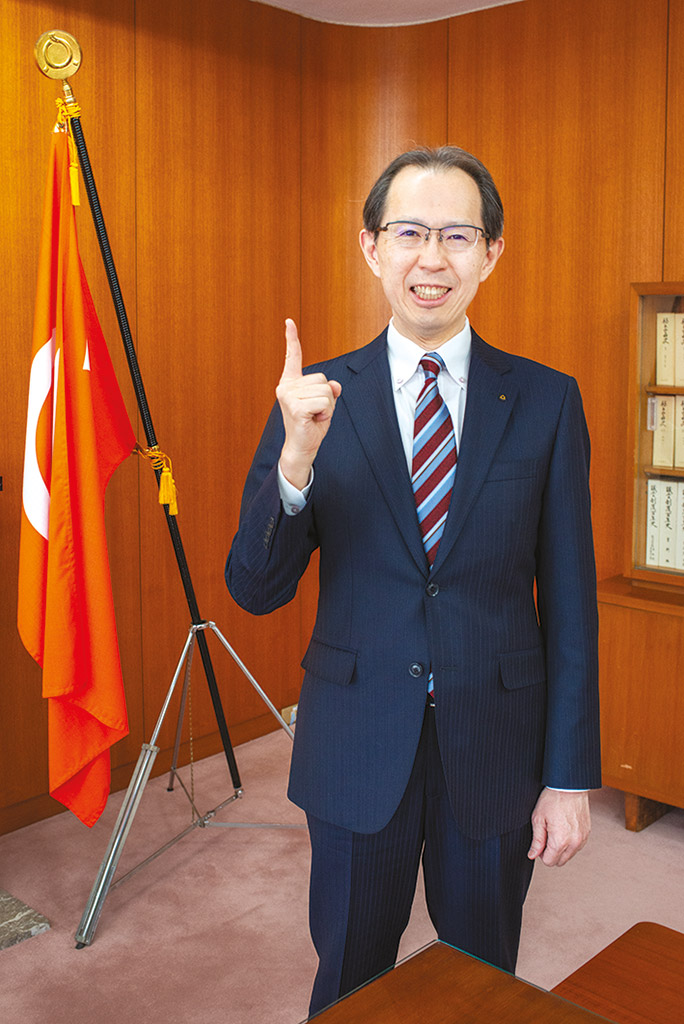
I would like to ask about the rapid population decline. Right now, nearly 33% of Fukushima residents are over 65 years old. Obviously, the issue of the aging population is not limited to Fukushima Prefecture, but how are you addressing this problem?
I would like to hear about your thoughts and specific efforts to attract young people from outside the prefecture, establish them in the prefecture and reduce the number of people moving out of Fukushima.
U. M.: The decline in the local population is a big problem, so one of my two missions when I became governor for my third term was to stop or even reverse this trend. It is only natural for people to grow old and die. However, the problem is compounded by the fact that many young people decide to move out of the prefecture.
In order to stop the demographic decline, it is important to have a viable immigration policy. In other words, we want to attract people from outside our prefecture. With this goal in mind, we have developed an immigration portal site and a programme of seminars to disseminate detailed information about the many opportunities for people who may be interested in moving to Fukushima. We were also creating a full range of immigration consultation counters and information desks in the Tokyo metropolitan area. As a result, the number of consultations with people wanting to move to our prefecture is now the third highest among the 47 prefectures, and the number of people who seem to be interested is constantly increasing. The important thing is setting up opportunities for these people to communicate with local residents and other people who have already moved to Fukushima. Therefore, we have devised a model migration experience. For example, prospective people and families can spend three or five days or even a week here and experience first-hand what it is wish to live in Fukushima. They can stay longer, if they like, and they can even try different places. But I think it is important to have people try it out.
Originally, Fukushima was famous as a prefecture to which people wanted to move, but after the earthquake and the nuclear accident, most people were understandably wary of coming here. Now, however, things are going much better. Four or five years ago, we surpassed pre-earthquake levels, and since then we have broken records every year. Obviously, we want this trend to continue.
In a sense, Covid-19 has helped our plans because with the pandemic, working remotely has become the norm. Until before Covid-19, for example, if you moved to Fukushima from Tokyo, you had to change your job. But now many people work remotely. Fukushima is also relatively close to Tokyo; it only takes 1 hour and 40 minutes by Shinkansen to get here, so people who usually work from home can go to Tokyo once, twice or three times a month. I do the same myself. This afternoon, for example, I am travelling to Tokyo and will be back in the evening, and tomorrow I am doing the same.
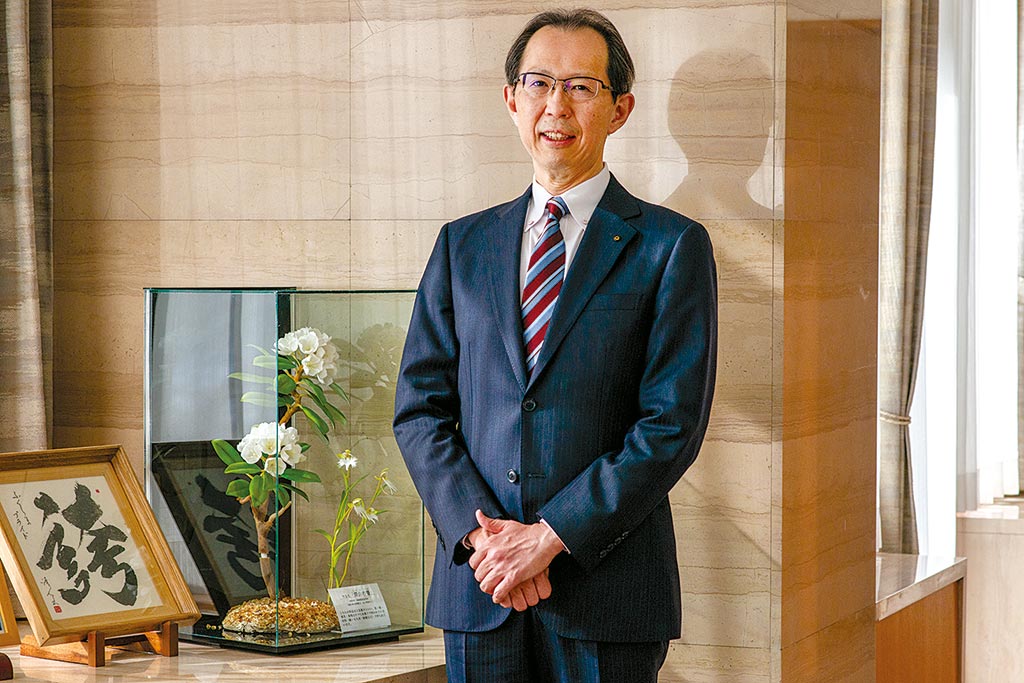
Fukushima Prefecture is also famous for its delicious cuisine, and each region has its own local food. For example, Kitakata ramen is popular everywhere, and Aizu-Yukawa is famous for its rice. In other words, food plays an important role in attracting tourists. What is your food and cuisine related strategy?
U. M.: There are three food-related attractions in Fukushima. The first is the local gourmet cuisine. Besides Kitakata ramen, which you have already mentioned, Fukushima City is famous for gyoza (dumplings) and Namie for its yakisoba (stir-fried noodles). Then there are sosu katsudon (pork cutlet rice bowl with thickened Worcestershire sauce) and soba (buckwheat noodles). Many people actually come to Fukushima specifically to eat these dishes. Indeed, our cuisine has been an effective means of promoting our prefecture.
The second attraction is definitely fruit. Fukushima grows a lot of fruit: peaches, pears, apples, persimmons, strawberries, cherries, etc.
Last but not least, we are famous for our sake production. Every year we hold a new national sake contest where several awards are given to the best brands and producers, and Fukushima has won the most medals nine times in a row in the past several years. That is how highly our sake is regarded. We are very proud of it. We are now spreading the word and promoting our food and cuisine, not only in Japan, but Europe, the United States and the rest of the world, and everyone has been very receptive.
Finally, please give a personal message to the European readers of Zoom Japan.
U. M.: First of all, I would like to thank the magazine for devoting a whole issue to Fukushima Prefecture and giving me a chance to talk about it. Especially after the Great East Japan Earthquake and nuclear accident in 2011, people all over the world have been cheering for Fukushima, and wherever I travel I receive warm encouragement and support. Thanks to this, we have been able to make progress with our reconstruction plans over the past 12 years, and for this I would like to express my gratitude. There is one more thing I want to say: please come to Fukushima. Most people visit Tokyo, but Fukushima is actually quite close to Japan’s capital. So, if you have the chance to come to Japan, please come to see, taste, and experience Fukushima. Fukushima is, of course, a disaster area. It is the place where a nuclear disaster occurred. This is a fact and we cannot change the past, but Fukushima is trying to change this definition of itself. There are problems even in France and other countries, but everyone is doing their best to solve those problems and build a better future. That is why we want to make Fukushima synonymous with Hope Tourism. So let’s work hard to overcome our problems together. I am looking forward to welcoming you to Fukushima.
Interview by Gianni Simone

